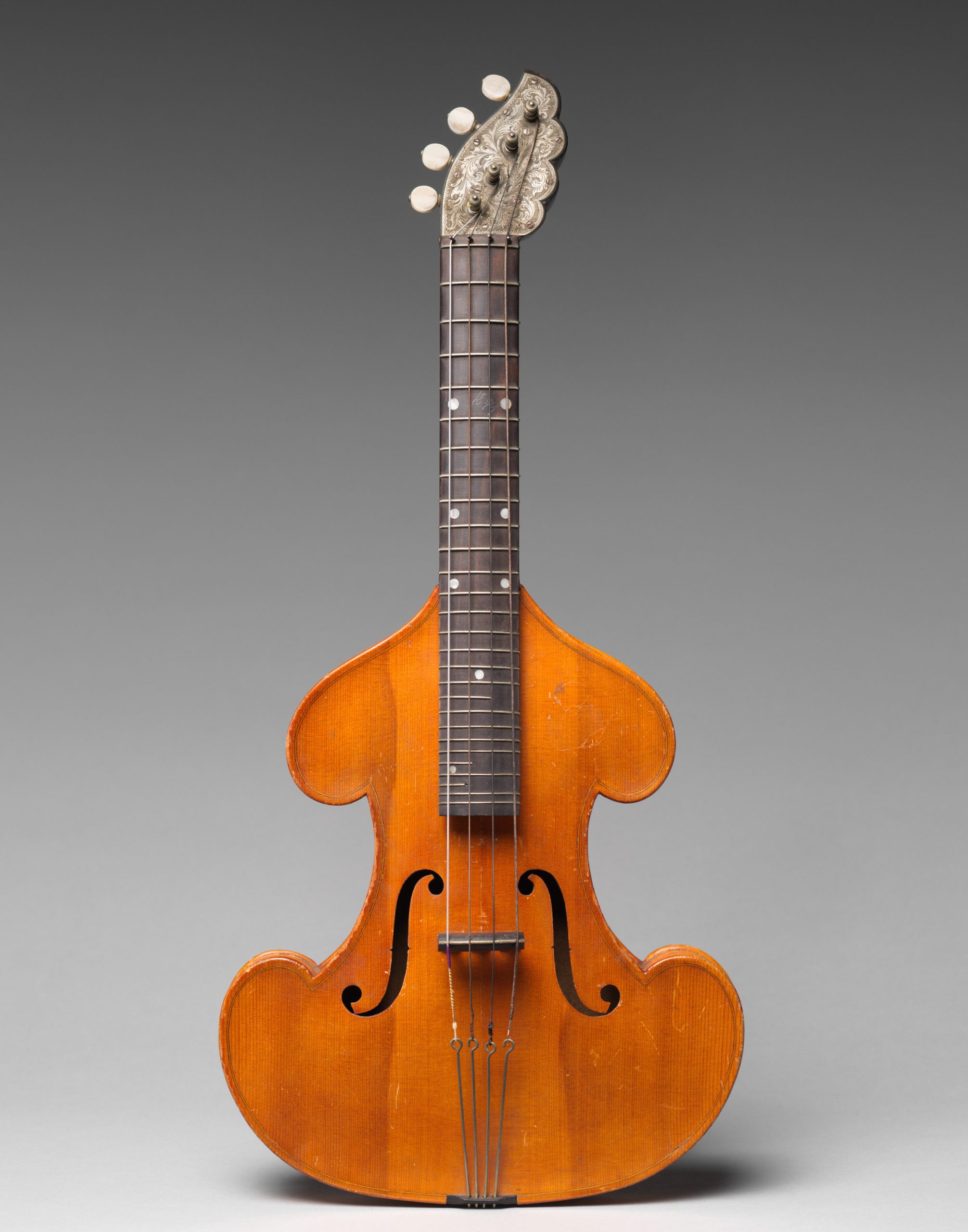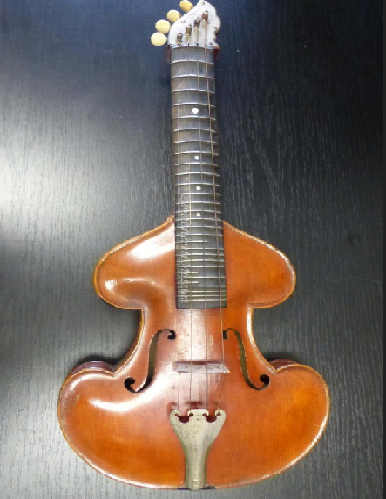Streichmelodion
Bowed Instruments
Europe
Between 1001 and 1900 AD
The Streichmelodion is a distinctive bowed string instrument that belongs to the zither family. It features a unique design that resembles a small viola, characterized by its curved body and four metal strings.
The instrument is typically played by resting it on a table, allowing the player to use a bow, similar to that of a violin, to produce sound. This method of playing enables the Streichmelodion to create rich, resonant tones that can be both melodic and harmonic. The instrument’s construction includes a soundboard made from high-quality wood, which contributes to its acoustic properties. The Streichmelodion is known for its expressive sound, making it suitable for various musical genres, from classical to folk music. Its portability and ease of use have made it a popular choice among musicians seeking a versatile instrument that can adapt to different musical styles.
History of the Streichmelodion
The Streichmelodion was invented in 1856 by Leopold Breit in Brno, which is located in the Czech Republic. This period marked significant developments in musical instrument design, particularly in Europe, where innovations were being made to enhance sound quality and playability. The Streichmelodion emerged as part of this wave of creativity, combining elements from both bowed instruments and zithers. In the 19th century, Europe saw a growing interest in folk music and traditional instruments, leading to the establishment of various zither types. The Streichmelodion was designed to fill a niche within this family, offering musicians an alternative way to produce melody and harmony simultaneously. As it gained popularity, the instrument became associated with both amateur and professional musicians across Europe. Over time, the Streichmelodion has retained its appeal due to its unique sound and versatility. While it may not be as widely recognized as other string instruments, it has carved out a dedicated following among those who appreciate its distinct qualities.
Materials Used in Construction
The construction of the Streichmelodion involves several key materials that contribute to its overall sound quality and durability. The body is typically made from fine wood such as spruce for the soundboard and sycamore for the back and sides. These materials are chosen for their acoustic properties, allowing for optimal sound projection and resonance.The strings of the Streichmelodion are usually made from metal, which provides a bright and clear tone when played. This choice of material allows for greater sustain and volume compared to gut or synthetic strings commonly used in other string instruments. The combination of high-quality woods and metal strings results in an instrument capable of producing a wide range of tones.
How It Works
The Streichmelodion operates on principles similar to those of other bowed string instruments. When the player draws a bow across the strings, vibrations are created that travel through the body of the instrument. This process amplifies the sound produced by the strings, resulting in the rich tones characteristic of the Streichmelodion. Players can manipulate pitch by pressing down on the strings with their fingers while bowing. This technique allows for expressive playing, enabling musicians to convey emotion through their performance. Additionally, players can vary bowing speed and pressure to achieve different tonal qualities, making it possible to create intricate melodies and harmonies.
Types of Streichmelodion
While there is primarily one standard type of Streichmelodion associated with its inventor Leopold Breit, variations may exist based on individual craftsmanship or regional preferences. Some players may customize their instruments with different string materials or modifications to achieve specific tonal qualities.In addition to these variations, related instruments within the zither family include other types of bowed zithers such as the bowed psaltery and various forms of concert zithers. Each instrument offers unique characteristics while sharing similarities in construction and playing technique.
Features of the Streichmelodion
Key features of the Streichmelodion include:
Four Metal Strings: Provides clarity and sustain.
Curved Body: Resembles a small viola for aesthetic appeal.
Wooden Construction: Enhances resonance and sound quality.
Bowed Technique: Allows for expressive melodies.
Table Playing Position: Facilitates ease of use during performances.
These features collectively contribute to the distinctiveness of the Streichmelodion within the broader category of string instruments.
Music Composed for the Streichmelodion
The music composed for the Streichmelodion often reflects a blend of classical influences and folk traditions. Its ability to produce both melody and harmony makes it suitable for various musical genres. Musicians frequently use it in ensemble settings or as a solo instrument during performances. The melodies played on the Streichmelodion often incorporate improvisation and ornamentation, showcasing both tradition and individual artistry. Its expressive capabilities allow musicians to convey deep emotions through their playing, making it an ideal choice for storytelling through music.
Cultural Significance
The cultural significance of the Streichmelodion extends beyond its musical role; it embodies aspects of heritage among European communities that value traditional music practices. As an instrument associated with both folk traditions and classical performances, it represents a bridge between different musical worlds. Efforts to preserve traditional music practices have sparked renewed interest in learning how to play instruments like the Streichmelodion among younger generations. This revival not only helps maintain cultural traditions but also fosters community cohesion through shared musical experiences.
The Streichmelodion is more than just an instrument; it is a vital part of European cultural heritage that continues to resonate with audiences today.
FAQ
What is the origin of the Streichmelodion musical instrument?
The Streichmelodion was invented in the early 19th century in Europe, specifically Germany. It was developed as a keyboard instrument with a mechanical bow that mimics the sound of stringed instruments. Its creation is attributed to the German instrument maker Carl August Götz. The instrument was intended to combine the sound of the violin with the playability of a keyboard.
What is the Streichmelodion made of?
The Streichmelodion consists of a keyboard and a set of strings that are mechanically bowed. It is typically made of wood for the body and frame, and metal for the strings. The strings are placed under tension, and the bow mechanism is activated via a key, producing a string-like sound. The construction of the instrument is designed to emulate the playing technique of a violin.
What kind of music is played on the Streichmelodion?
The Streichmelodion is used primarily in classical and romantic music. It can perform melodies and harmonies similar to those of string instruments like the violin. Its expressive potential is often showcased in orchestral and chamber music settings. The instrument is noted for its ability to create a smooth, bowed sound in a keyboard form.
 Links
Links
References
Other Instrument
Categories



















